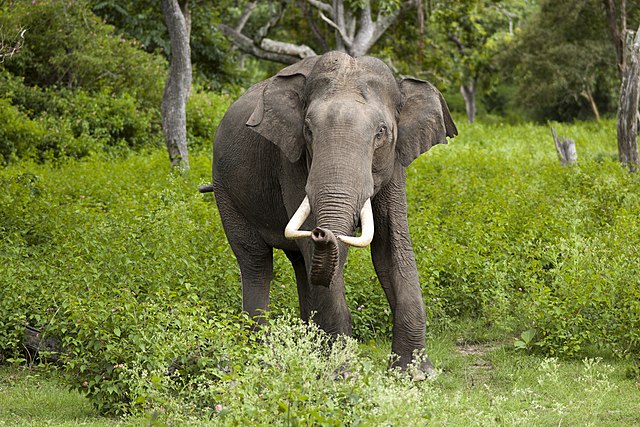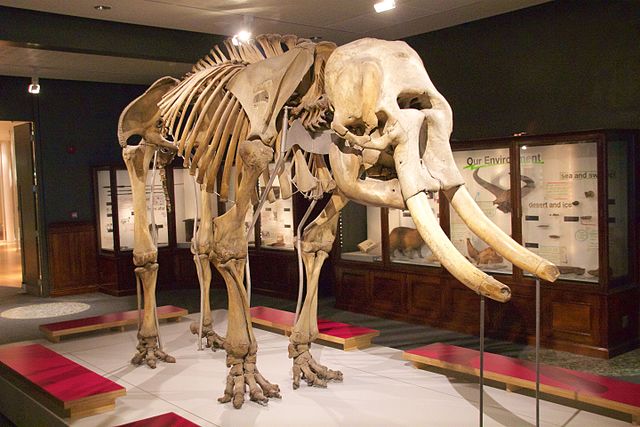The Indian elephant is one of three extant recognized subspecies of the Asian elephant, native to mainland Asia. The species is smaller than the African elephant species with a convex back and the highest body point on its head. The species exhibits significant sexual dimorphism with a male reaching an average shoulder height of about 3.2 m (10 ft) and weighing up to 5,400 kg (11,900 lb) whereas a female reaches an average shoulder height of about 2.54 m (8.3 ft) and weighs up to 4,160 kg (9,170 lb). It has a broader skull with a concave forehead, two large laterally folded ears and a large trunk. It has grey colored smooth skin with four large legs and a long tail.
Image: Elephas maximus (Bandipur)
Image: Indian Elephant
The skull of an Indian elephant at the Natural History Museum in Göteborg
Nearly three-fourth of the Indian elephant population is found in India. Pictured are herds from Jim Corbett National Park in India
The Asian elephant, also known as the Asiatic elephant, is a species of elephant distributed throughout the Indian subcontinent and Southeast Asia, from India in the west, Nepal in the north, Sumatra in the south, and to Borneo in the east. Three subspecies are recognised—E. m. maximus, E. m. indicus and E. m. sumatranus. The Asian elephant is characterised by its long trunk with a single finger-like processing; large tusks in males; small ears folded laterally in contrast to African elephants; and wrinkled grey skin. The skin is smoother than African elephants and may be depigmented on the trunk, ears or neck. Adult males average 4 t in weight, and females 2.7 t.
Image: Elephas maximus (Bandipur)
Image: Sri Lankan elephant (Elephas maximus maximus) female and young 1
Young adult male Asian elephant skeleton compared to a human
Skeleton of a male Asian elephant







